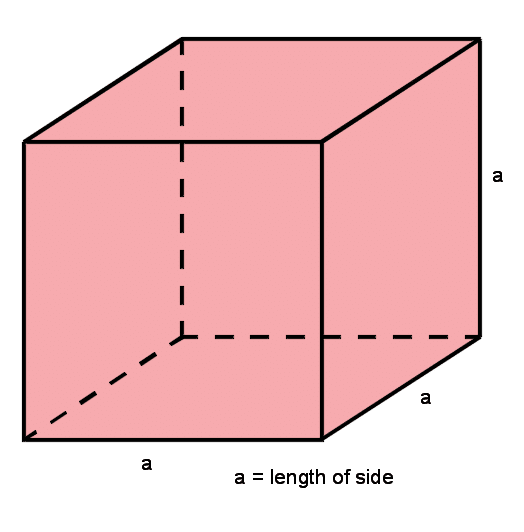Calculation of Cube Surface Area
Table of Contents
Surface Area of a Cube
The surface area of a cube formula is the sum of all the sides/faces of the 3D shape. The cube has 6 faces/sides altogether, which all have the same surface area. The derivation of the cube surface area formula is shown below.

The surface area of a cube is the sum of the areas of all six sides. All lengths of the cubes are the same.
The area of a single side is a x a, or it can be shown as a2.
As there are six sides, we can make the formula for the surface area of a cube as 6a2.
Formula for Surface area of a cube = 6a2
Surface Area of a Cube Example 1

A square box has a length of 350mm, height of 350mm and width of 350mm. Find the surface area of the box.
Solution:
The formula for surface area of a cube is 6a2
a = 350 mm
The surface area = 6*(350)2 = 735,000 mm2
This can also be written as 0.735 m2 (735,000 multiplied by 10-6 to convert from mm2 to m2).
Note – remember to check units when calculating the surface area.
Surface Area of Cube Example 2

A cube has a length of 10 cm, height of 10 cm and width of 10 cm. Find the surface area of the cuboid.
Solution:
The formula for surface area of a cube is 6a2
a = 10 cm
The surface area = 6*(10)2 = 600 cm2
This can also be written as 0.06 m2 (600 multiplied by 10-4 to convert from cm2 to m2).
Note – remember to check units when calculating the surface area.
